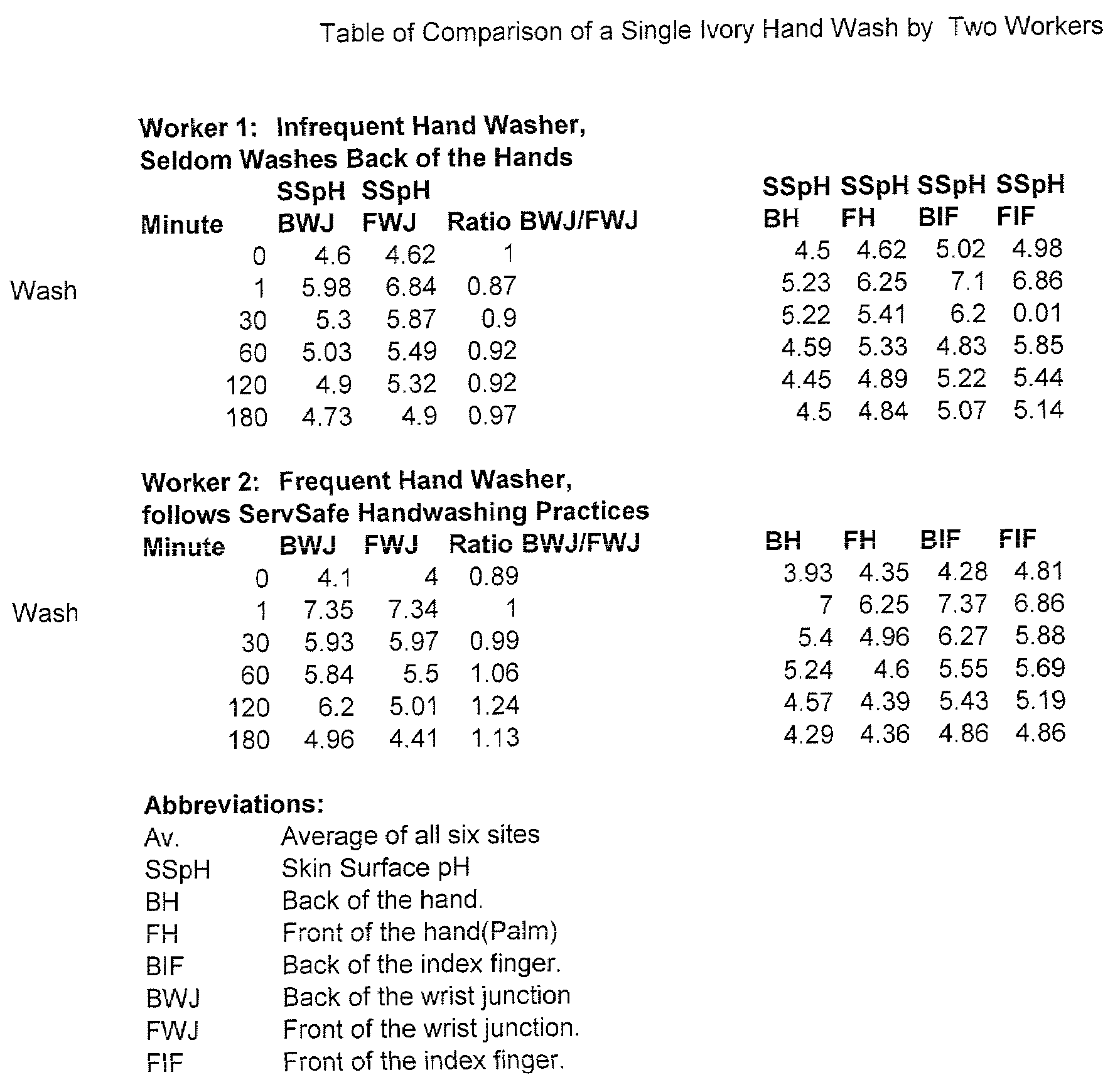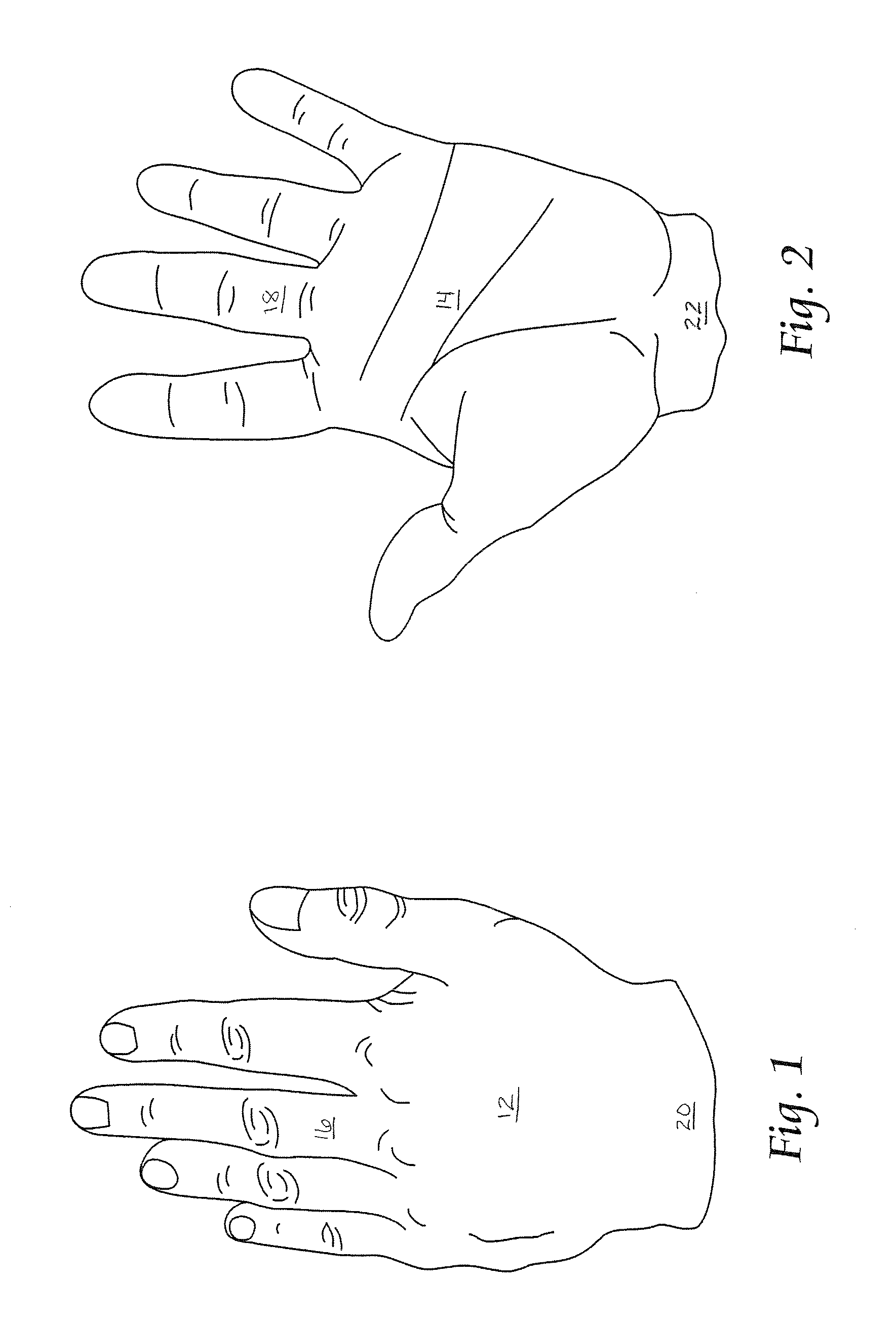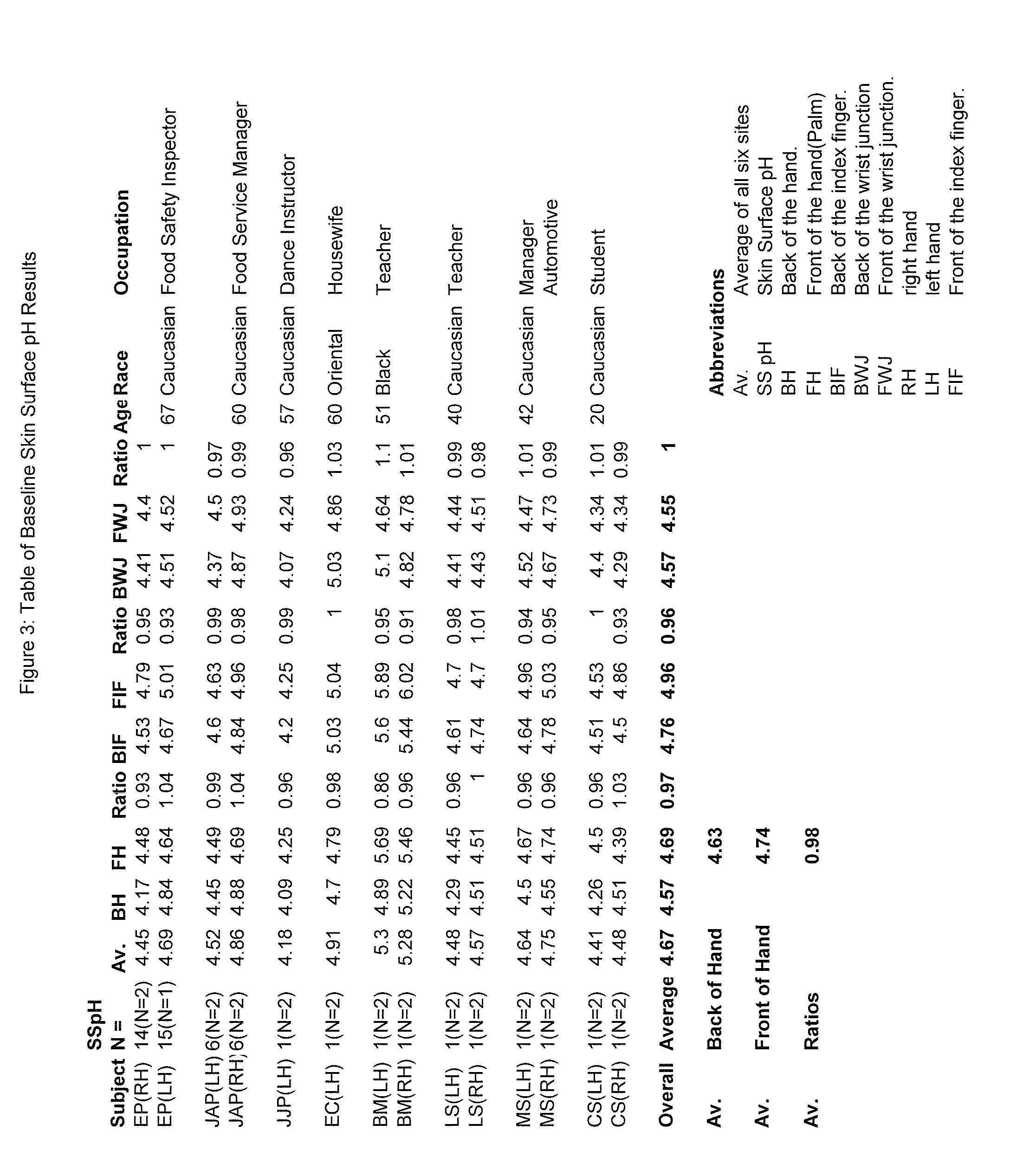Composition for sanitizing hands and a method for verifying and monitoring hand washing and sanitizing practices
a technology for sanitizing hands and a method for ensuring hand washing and sanitizing practices, applied in the direction of alarms, instruments, etc., can solve the problems of health care workers contaminating patients with unsanitary hands, lack of hand washing in the food processing industry, food contamination,
- Summary
- Abstract
- Description
- Claims
- Application Information
AI Technical Summary
Benefits of technology
Problems solved by technology
Method used
Image
Examples
example 1
[0075]Skin Surface pH measurements were taken on specified sites on the hands of volunteers, having various occupations. They did not wash or sanitize their hands overnight. The skin surface pH measurements were taken the following morning.
[0076]The pH meter used for all studies was the ExStik II (pH100) Meter. Calibrations were taken at pH 4.0 and 7.0, according to the manufacturer's specifications. FIGS. 1 and 2 show six specific areas on the hand that served as sites for measurements of skin surface pH. The sites included the center of the back of the hand (BH) 12, the center of the front of the hand i.e., center of the palm (FH) 14, the front of the upper section of the index finger (FIF) 18, the back, upper section of the index finger (BIF) 16, the center of the front wrist junction (FWJ) 22, and the center of the back wrist junction (BWJ) 20.
[0077]Baseline skin surface pH measurements were taken on the morning before the subjects washed their hands. For skin surface pH measure...
example 2
[0081]A comparison study was carried out on the time course of skin surface pH on sites on the hands after a single washing of the hands with Ivory® soap. Two subjects were studied. One subject (JAP) is a manager with non-accommodated hand skin. She does not usually wash her hands according to the ServSafe Guidelines. She also avoids washing the back of her hands. She is referred to here as the non-accommodated hand washer. The second subject (EP) is a food safety inspector who washes his hands 10-15 times per day and 5-6 days per week by following the ServSafe Guidelines. He is referred to as the accommodated hand washer.
[0082]The sites described in EXAMPLE 1 were studied using the right (EP) hand and the left hand (JAP) for testing. The results are presented in FIG. 4 and illustrated in FIGS. 5 and 6.
[0083]The results are an average of two skin surface pH readings on each site. Also shown is the ratio of the skin surface pH on the back wrist junction (BWJ) site 20 to that on the f...
example 3
[0087]Experiments were carried to determine the time course of skin surface pH on designated sites of the hand due to: a) lack of washing of the hands during the day (unwashed hands), b) washing the hands with distilled water (pH 5.3), c) washing the hands with tap water (pH 7.5), d) washing the hands with Soft Soap® hand cleanser, e) washing the hands with Dove® bar and f) washing the hands with Lever® 2000 bar. The hands were washed according to ServSafe Guidelines, with the exception that soap was not used for a-c above. The results are presented in FIG. 7 and illustrated in FIG. 8 for sites on the BWJ 20.
[0088]a) Skin surface pH measurements were taken on unwashed sites over the course of the day. The results indicate that the skin surface pH does not change over the course of the eleven hour period. The % deviation is 0.45%. Thus, over the course of the day the skin surface pH on the hands is not subject to diurnal variations.
[0089]b) Skin surface pH measurements were taken on ...
PUM
 Login to View More
Login to View More Abstract
Description
Claims
Application Information
 Login to View More
Login to View More - R&D
- Intellectual Property
- Life Sciences
- Materials
- Tech Scout
- Unparalleled Data Quality
- Higher Quality Content
- 60% Fewer Hallucinations
Browse by: Latest US Patents, China's latest patents, Technical Efficacy Thesaurus, Application Domain, Technology Topic, Popular Technical Reports.
© 2025 PatSnap. All rights reserved.Legal|Privacy policy|Modern Slavery Act Transparency Statement|Sitemap|About US| Contact US: help@patsnap.com



